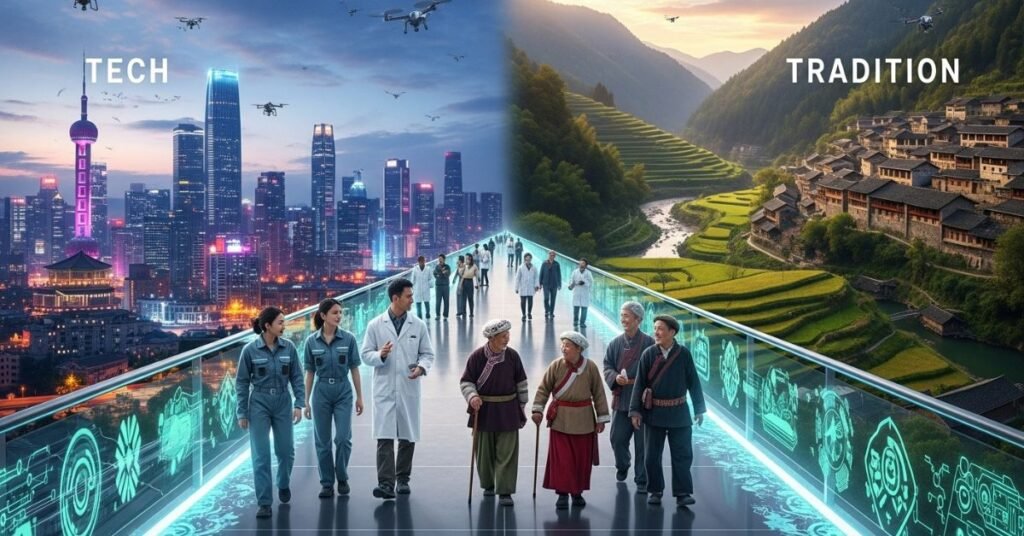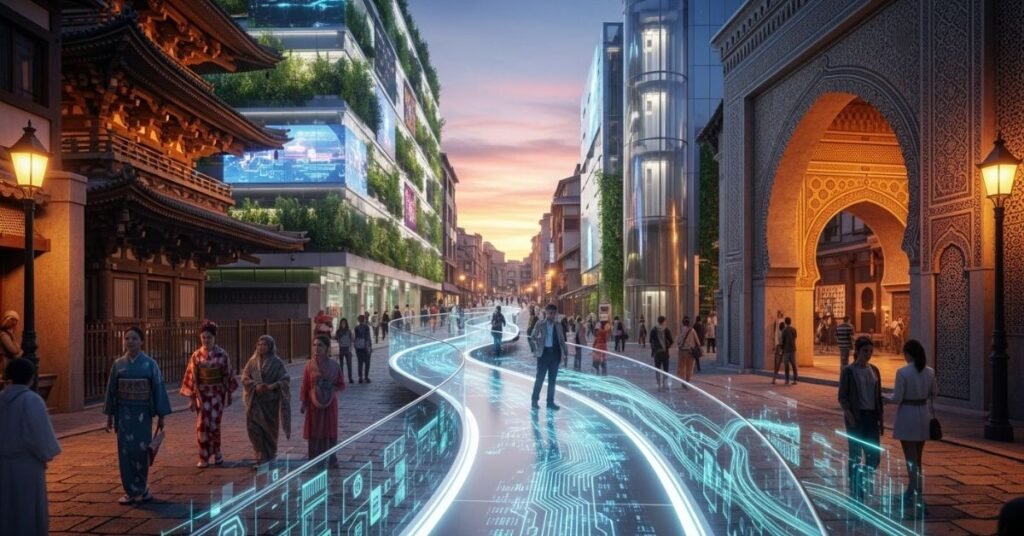Contents
- 1 Introduction
- 2 What Does Soutaipasu Really Mean?
- 3 The Role of Tradition in a Digital Age
- 4 How Technology Can Preserve Heritage
- 5 Soutaipasu in Education: Blending Old and New Learning
- 6 Business and Soutaipasu: Tradition Meets Innovation
- 7 Cultural Identity in a Globalized World
- 8 Soutaipasu and Sustainability
- 9 Daily Life Applications of Soutaipasu
- 10 The Future of Soutaipasu
- 11 Conclusion
- 12 FAQs About Soutaipasu
Introduction
In today’s fast-paced world, it often feels like technology and tradition are moving in opposite directions. On one side, you have innovation pushing boundaries with artificial intelligence, smart devices, and digital lifestyles. On the other, traditions ground people in cultural practices, rituals, and values that have been passed down through generations. Soutaipasu emerges as a concept that bridges this divide, offering a new way to balance modern advancements with timeless heritage.
The idea of Soutaipasu is not about choosing one over the other but creating harmony between them. It suggests that technology doesn’t have to erase traditions, and traditions don’t need to hold back progress. Instead, both can coexist and enrich each other. For example, modern apps are helping communities preserve endangered languages, while blockchain is being used to safeguard historical artifacts. These efforts are practical illustrations of Soutaipasu in action.
This article explores how Soutaipasu can create opportunities across education, business, culture, and daily life. It will also highlight its role in shaping a more sustainable and inclusive future. If you’ve ever wondered how to respect the past while embracing the future, Soutaipasu provides an inspiring answer.
What Does Soutaipasu Really Mean?
Soutaipasu is a term that combines the idea of “pathway” with a philosophy of balance. At its core, it represents a journey where tradition and technology walk side by side instead of colliding. Unlike rigid concepts that favor one side, Soutaipasu is fluid—it evolves depending on context, culture, and need.
For some, Soutaipasu may mean using digital tools to pass down recipes, folklore, or rituals to younger generations. For others, it could be about integrating advanced farming technology into traditional agricultural practices. The concept’s versatility is what makes it so lovely. It doesn’t dictate a single method but invites innovation while honoring heritage.
One practical way to understand Soutaipasu is to see it as a bridge. Imagine a wooden bridge with one side rooted in history and the other reaching toward the future. Without both ends being stable, the bridge cannot exist. In the same way, Soutaipasu relies on the stability of traditions and the innovation of technology to create meaningful connections.
This balance has the power to strengthen identity, promote sustainability, and ensure that progress doesn’t come at the cost of losing cultural richness.
The Role of Tradition in a Digital Age

Tradition is often seen as old-fashioned, but in reality, it provides the foundation for modern innovation. Cultural practices, family values, and community rituals shape how people see the world and interact with it. Without these anchors, technology risks becoming cold, disconnected, and purely utilitarian.
In many communities, traditions are already evolving with the help of digital platforms. For instance, traditional music and dance forms are being preserved on video platforms, reaching audiences far beyond their original geographic boundaries. Similarly, ancestral cooking techniques are being documented and shared across recipe blogs and interactive cooking apps.
These examples show that tradition doesn’t need to fade in the face of technology. Instead, when combined thoughtfully, both can thrive. Digital archiving, online communities, and interactive platforms can make cultural practices more accessible to younger generations who might otherwise drift away from them.
Soutaipasu emphasizes that tradition is not a barrier to progress. Rather, it is a compass that guides innovation toward more human-centered outcomes. By respecting roots while adopting new tools, societies can maintain their cultural identity while moving forward.
How Technology Can Preserve Heritage
While some worry that technology erases traditions, it can also be the very tool that protects them. Soutaipasu highlights this potential by showing how digital innovations can safeguard cultural practices and make them more relevant.
Take language preservation as an example. Many indigenous languages are at risk of disappearing, yet mobile apps and AI-powered translation tools are making it easier for younger generations to learn and practice them. Similarly, blockchain technology is being used to track and authenticate historical artifacts, preventing fraud and ensuring cultural treasures remain intact.
Additionally, augmented reality (AR) and virtual reality (VR) are included. Imagine walking through an ancient temple or village without leaving your home. These technologies make cultural experiences more accessible to people worldwide, creating both awareness and appreciation for traditions that might otherwise remain hidden.
In this way, Soutaipasu encourages us to see technology as a partner rather than a rival. It’s not about replacing rituals with screens but using screens to highlight rituals. This mindset can create a world where cultural preservation becomes more engaging, interactive, and sustainable.
You Might Also Like: CDiPhone Review
Soutaipasu in Education: Blending Old and New Learning
Education is one of the clearest areas where Soutaipasu shines. Traditional teaching methods often emphasize discipline, respect, and memorization, while modern learning tools prioritize creativity, problem-solving, and access to information. When combined, they create a balanced approach that prepares students for the future while keeping them connected to their roots.
For example, digital platforms can bring historical stories to life through interactive storytelling. A student can learn about their cultural history not just from textbooks but through virtual tours, animated lessons, and digital archives. At the same time, elders in a community can share oral traditions through podcasts or live online sessions, making sure that these teachings are not lost.
This dual approach strengthens both sides. Students gain access to global knowledge while staying grounded in their heritage. Teachers, too, can use a mix of traditional classroom discipline and modern digital tools to create more effective and engaging lessons.
Soutaipasu in education is not about abandoning old methods or blindly embracing new ones. It’s about creating synergy between them to give learners the best of both worlds.
Business and Soutaipasu: Tradition Meets Innovation
The business world often highlights innovation as the only key to success. But Soutaipasu reminds us that tradition also plays a role in building trust, authenticity, and long-term value.
For example, many family-owned businesses thrive because they maintain traditional values of honesty, quality, and customer relationships. When these values are combined with digital tools such as e-commerce, social media marketing, and data analytics, the result is a stronger and more competitive presence.
Consider traditional crafts. Artisans can sell handmade items through online marketplaces, reaching global audiences while preserving centuries-old techniques. Similarly, food businesses that respect ancestral recipes can use modern packaging and logistics to expand their reach.
This blending of heritage and innovation builds brand identity that feels authentic rather than artificial. Customers are drawn to products and services that have a story, and Soutaipasu helps businesses highlight that story while still competing in the modern market.
Ultimately, Soutaipasu in business shows that you don’t have to choose between being modern and traditional—you can be both, and that duality is what creates lasting impact.
Cultural Identity in a Globalized World
Globalization has made cultures more interconnected than ever, but it has also created the risk of losing unique identities. Soutaipasu provides a way to navigate this challenge by promoting cultural pride while still engaging with global trends.
Through social media, people can share their cultural traditions with international audiences. Festivals, crafts, and rituals that were once local can now be celebrated worldwide. This global exposure not only educates others but also strengthens pride among younger generations who may feel distant from their heritage.
At the same time, Soutaipasu warns against cultural dilution. It encourages balance—sharing traditions without losing their meaning. For example, a festival streamed online should still hold its spiritual and communal value, not just become an entertainment show for viewers.
By practicing Soutaipasu, individuals and communities can maintain strong cultural roots while enjoying the benefits of global connectivity. This balance helps create a world that is diverse, inclusive, and respectful of heritage.
Soutaipasu and Sustainability
Sustainability is another area where tradition and technology naturally complement each other. Traditional practices often emphasize respect for nature, resource conservation, and community living. Modern technology provides tools to scale these practices for today’s challenges.
For instance, ancient farming methods that rely on natural cycles can be enhanced with smart irrigation systems and drone monitoring. Traditional architecture, designed for natural cooling, can be combined with modern energy-efficient technologies to create eco-friendly buildings.
This partnership between old wisdom and new solutions is exactly what Soutaipasu stands for. By combining heritage practices with digital innovation, societies can find pathways toward sustainable development that are both effective and culturally meaningful.
The philosophy encourages people to view sustainability not as a modern trend but as a continuation of ancestral wisdom. This perspective not only strengthens environmental efforts but also makes them feel authentic and connected to human history.
Daily Life Applications of Soutaipasu
Soutaipasu is not just a big idea—it can be part of everyday life. Small, practical actions can bring technology and tradition together in ways that feel natural.
For example, families can use messaging apps to organize traditional gatherings while still maintaining rituals passed down through generations. Digital recipe collections can preserve family cooking secrets for future members. Virtual fitness platforms can adapt traditional exercises like yoga or martial arts for a modern lifestyle.
Even in personal habits, Soutaipasu plays a role. You might use a smartwatch to track your health while practicing meditation techniques rooted in centuries-old traditions. Or you might blend digital calendars with cultural festivals to ensure you stay connected to both modern obligations and ancestral celebrations.
These small integrations show that Soutaipasu is not limited to big institutions or movements. It’s a mindset anyone can adopt, enriching daily life by creating harmony between the old and the new.
The Future of Soutaipasu

Looking ahead, Soutaipasu has the potential to shape societies in powerful ways. As technology continues to advance, the need for grounding in tradition will only grow stronger. Without balance, there is a risk of losing identity, values, and connection.
In the future, Soutaipasu could influence how policies are made, how cities are designed, and how education systems evolve. Smart cities, for instance, could integrate traditional architectural styles with digital infrastructure. Healthcare systems could combine modern science with traditional healing practices.
The philosophy also has a role in global cooperation. By valuing both heritage and progress, Soutaipasu can inspire countries to share knowledge while respecting cultural differences. This balanced approach could help create a more harmonious and inclusive world.
Ultimately, Soutaipasu is not a trend but a long-term mindset. Its power lies in reminding us that while technology may shape the future, tradition shapes who we are. When both are honored, societies become stronger, more sustainable, and more connected.
You Might Also Like: Rajkot Updates News: When Will The Tesla Phone Be Released?
Conclusion
Soutaipasu represents more than just a bridge between technology and tradition—it is a philosophy of balance and respect. By combining the strengths of both, individuals and communities can preserve identity, build sustainable futures, and create innovation that feels human.
In education, business, sustainability, and daily life, Soutaipasu offers practical examples of how this harmony can work. It challenges the idea that progress must come at the cost of heritage, proving instead that the two can complement and enrich each other.
As the world moves forward, Soutaipasu invites us to walk with both feet firmly on the bridge—one rooted in the past and one stepping into the future.
FAQs About Soutaipasu
1. What is Soutaipasu?
Soutaipasu is a concept that bridges technology and tradition, promoting balance rather than conflict between the two.
2. How can Soutaipasu help in education?
It allows schools to combine traditional teaching values with digital tools, making learning both modern and culturally grounded.
3. Can technology really preserve traditions?
Yes. Tools like digital archives, VR, and mobile apps can safeguard languages, rituals, and cultural practices for future generations.
4. How does Soutaipasu support businesses?
Businesses can combine traditional values like authenticity with modern digital platforms to reach larger audiences while keeping their identity intact.
5. Is Soutaipasu relevant in daily life?
Absolutely. From using apps to organize cultural events to combining traditional exercises with modern health tracking, Soutaipasu can be applied to everyday habits.
6. What role does Soutaipasu play in sustainability?
It combines ancestral wisdom about resource use with modern green technology, offering effective and culturally meaningful solutions.
7. Why is Soutaipasu important for the future?
It ensures that as societies advance, they don’t lose their cultural identity or values, making progress more inclusive and sustainable.



